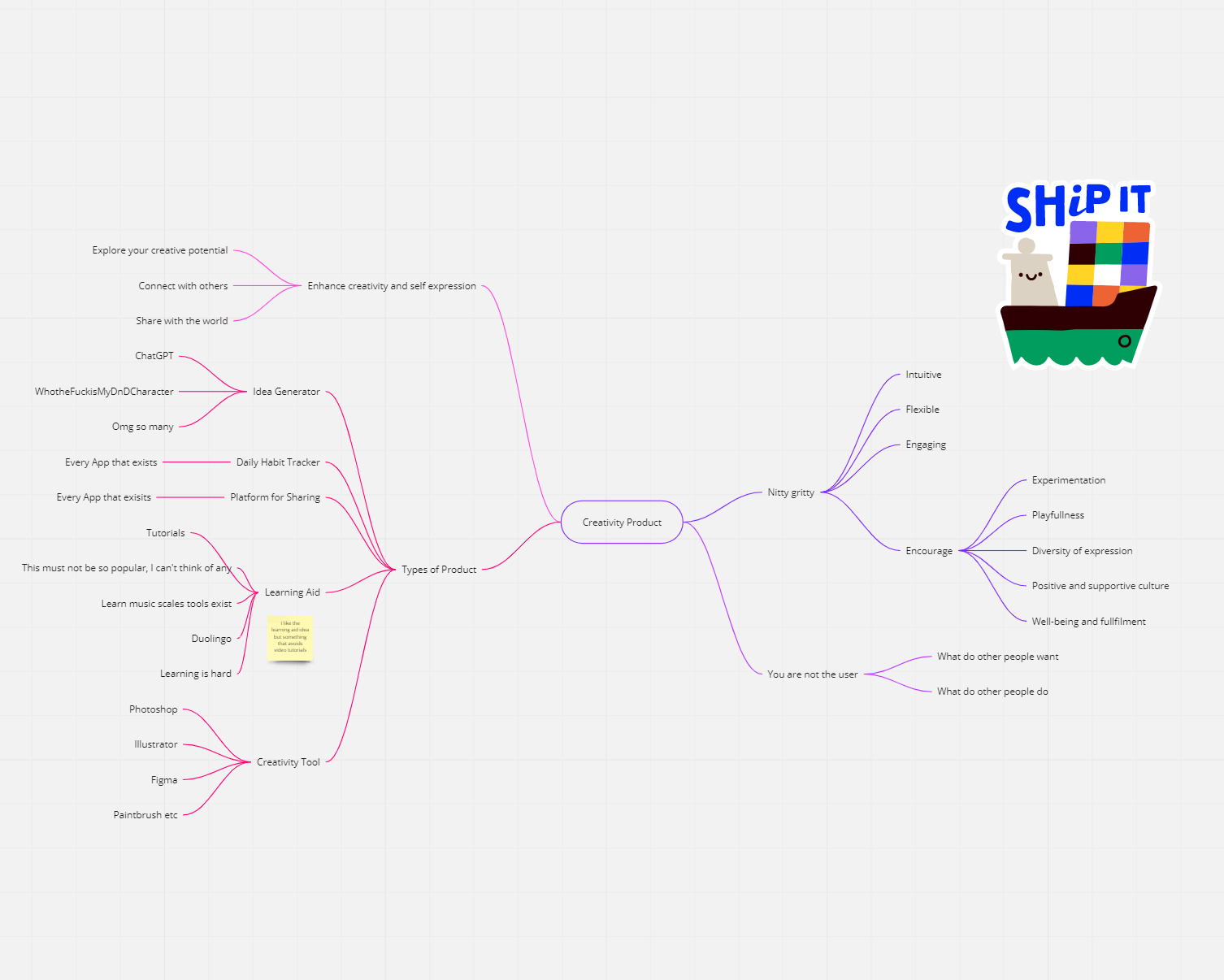
In this post, I will discuss our process and the team working aspect of the sprint. For an analysis of our artefact beFrank, please see WEEK 10: beFrank.
Jumping into our second design sprint of the course, I decided to change things up by working in a group. I teamed up with Sarah, and we quickly got to work.
Ahead of the sprint kick-off meeting, we met to discuss tactics. We agreed on which programs to use for specific stages and how to use them. As it was a busy time for both of us, we shared our schedules and updated each other with changes. Transparency on this level meant we could arrange meetings and sprint work around our other activities. Maintaining empathy for each other’s commitments allowed us to adjust our schedule regularly to account for highs and lows in energy levels. One improvement we could have made to our sprint meetings would have been to follow the Scrum methodology of short updates and quick decision-making (Schwaber and Sutherland 2023), as some of our meetings lacked direction. When establishing our schedule, we set milestone goals for the two weeks: ideation, development, build and presentation. Setting out our project goals early and remembering to allow time for compiling the presentation, we completed the sprint on track with minimal stress.
As the theme was ‘Creativity’, we allowed a comfortable amount of time for ideation due to the broadness of the topic. Miro was our product of choice for digital collaboration, and now I am a solid Miro fan. The freedom of the open board, coupled with the ability to link thoughts, turned out to be an essential part of our ideation journey. As much as I love Miro, though, I would still like to try out other digital collaboration tools such as FigJam or Mural (2023; 2023).
Our Miro board became our project development hub, where we shared sketches and ideas based on the outcome of our ideation process. Keeping all the information in one place was handy, making it easier to visualise a direction when I could see where we had been.
To build our artefact, we turned to Figma, where we set up pages and locations where we would collate components. In hindsight, our communication at this stage could have been better. As we both come from a creative background, we had a set idea for how the build stage of a project should go and assumed we were on the same page without needing to discuss the design stages. We evenly split the work of our horizontal slice, so it was only when we came to join the two halves that we realised that while similar, our work differed in style and sometimes intent. Due to our good planning, however, we had plenty of time to adjust the artefact to align our outputs into a final outcome. Part of the problem was that once we split the workload, we began using terms such as ‘my design’ and ‘your user journey’ rather than keeping our language product focussed.
Despite some small communication hurdles, I found the team aspect of this sprint extremely rewarding. In particular, the ideation stage was fun as we turned it into a fascinating and insightful discussion where we just happened to be taking notes. The strength of that initial conversation and its focus on the product story led us to a strong outcome.
Closing out our second design sprint, we conducted a team retrospective based on agile principles (Stellman and Greene 2014). This discussion was an excellent way to end the challenge as we shared our experiences and the pros and cons of the collaboration process. It also allowed me to discuss working methods that I have adapted to my difficulties with working memory (Psychology Today 2021). I found the retrospective invaluable as it clarified our different experiences and paved the way for more effective collaboration in the future.
References
FIGMA. 2023. ‘The Online Collaborative Whiteboard for Teams’. Figma [online]. Available at: https://www.figma.com/figjam/ [accessed 25 Mar 2023].
MURAL. 2023. ‘Mural Is a Collaborative Intelligence Company’. [online]. Available at: https://www.mural.co/ [accessed 25 Mar 2023].
PSYCHOLOGY TODAY. 2021. ‘Dyscalculia’. Psychology Today [online]. Available at: https://www.psychologytoday.com/us/conditions/dyscalculia [accessed 25 Mar 2023].
SCHWABER, K and J SUTHERLAND. 2023. ‘Scrum Guide | Scrum Guides’. Scrum Guides [online]. Available at: https://scrumguides.org/scrum-guide.html [accessed 23 Jan 2023].
STELLMAN, Andrew and Jennifer GREENE. 2014. Learning Agile: Understanding Scrum, XP, Lean, and Kanban. O’Reilly Media, Inc.
German vocabulary of the week
Collaboration – Zusammenarbeit
